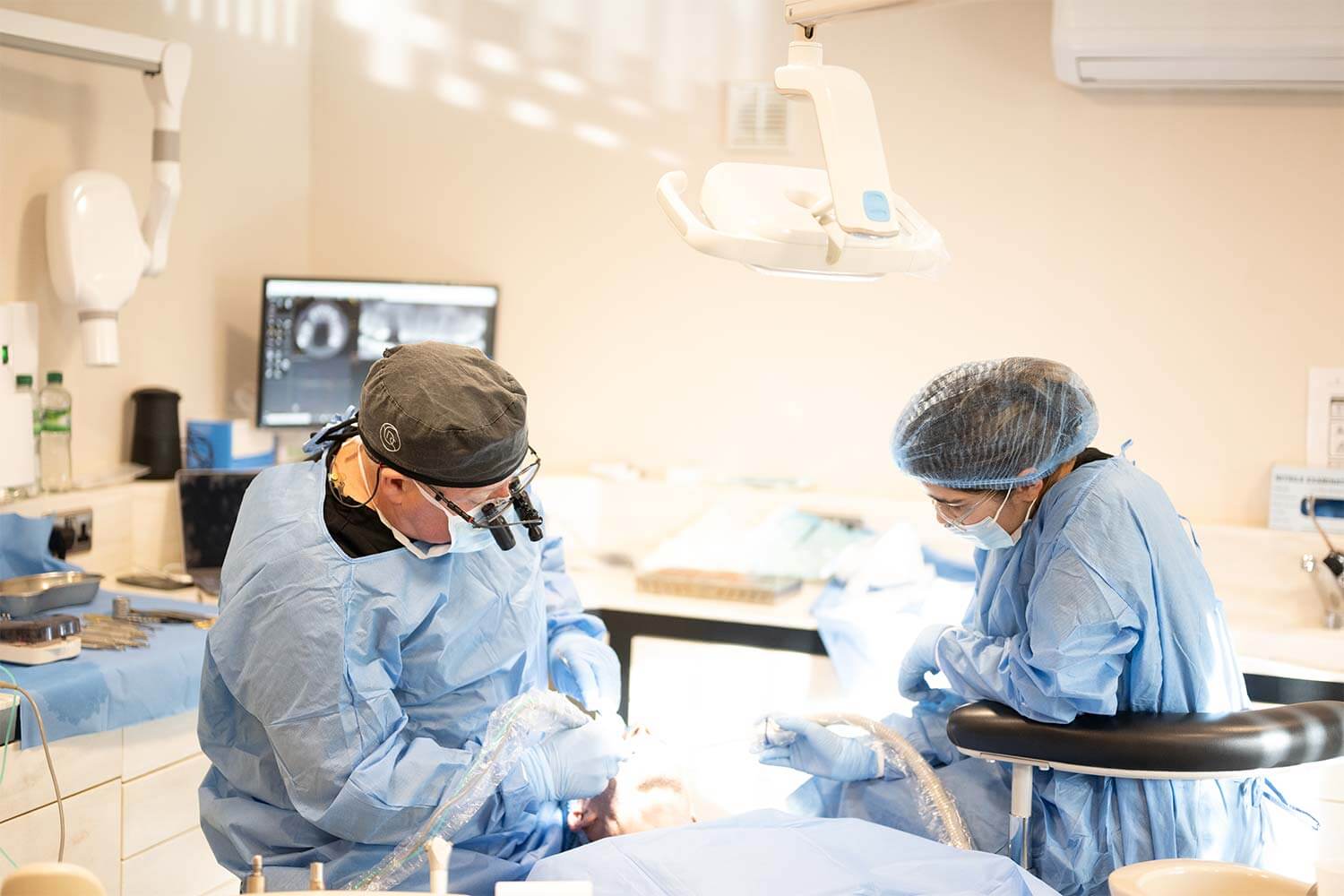
In some cases, additional treatment is needed to aid the success of your implant treatment. This is known as additional treatment and should be made clear to you by your dentist before you proceed with the implant treatment. Additional treatment is usually provided to fix a deficiency in the supporting structures of the future implant, this is most commonly the amount of bone, however, we will also discuss other reasons as to why a patient may need additional treatment.
Bone Grafting
A bone graft is a procedure provided to a patient to increase the amount of bone in an area, the need for a bone graft is usually determined at the consultation appointment after an intra-oral exam or a CBCT of the jaw. Different types of bone grafts are provided depending on the severity of how much bone has been lost in the area. This can range from a small amount of bone that needs grafting to a significant amount of bone to be replaced. In the event of a small bone deficiency in the implant site, the bone graft can be carried out immediately after placing the implant, this is usually from a synthetic material that is placed directly into the area that needs bone after placing the implant, basically, everything is done in one procedure, the implant is placed, the bone is also placed (usually in powder form) into the area that needs it, and the gum is placed back into position leaving both the implant and bone graft covered and allowed to heal.
In cases where the extent of lost bone in an implant site is too extensive for a graft on the same appointment as the implant placement, a different type of bone graft is needed to be called a block bone graft. This is where in some cases bone is taken from a donor site usually in the back part of the jaw or the palate and fixated in the area to be grafted, this is then left to heal for a number of months before the area is then reviewed and if the graft is successful, the implants are placed.
If for whatever reason you are a patient that has reservations about undergoing a block bone graft procedure which would involve the careful removal of your own bone from a donor site to a receptor site, options are also available for your clinician to use synthetic block bone materials and bone from animals.
This more extensive form of bone grafting (block graft) is a separate procedure that should be carried out months before the implant’s area is placed and is usually a separate fee from the dental implant treatment.
Sinus lift
A sinus lift is a special type of bone graft specifically carried out in the event of a lack of bone in the upper premolar/first molar (upper side/first back tooth) area which prevents the simple placement of an implant as if the implant was placed without providing more bone for the implant to be placed into, it would result in the piercing of the maxillary sinus. In these cases, shorter implants are normally used along with a sinus lift, and the graft procedure itself is usually carried out on the same appointment as placing the implants or in a separate appointment before placing the implants, with time for the bone graft material to heal.
The reason why a clinical would choose to carry out the sinus lift before the implant placement as opposed to carrying out both implant placement and sinus lift in one appointment is down to the severity of the bone deficiency in the area and therefore the extent of the graft. If smaller amounts of bone need to be generated the sinus lift can be done on the same day as the implant placement but if the graft is larger it may be done on a separate procedure by itself.
Soft Tissue Graft
A gum graft is sometimes needed to improve the amount of gum around an implant for functional and aesthetic reasons. If there isn’t enough gum around an implant it can be prone to be infiltrated by bugs and bacteria which can cause the implant to fail. In these cases, a graft may be suggested by your dentist to help shield the implant and keep it protected from bugs and bacteria. Grafts may also be recommended for aesthetic purposes if the gum has receded over time in an area with implants. A lack of gum can give a flat appearance to the smile and so in some cases in order for a dentist to satisfy a patient’s aesthetic desires a gum graft may be indicated. Gum grafts are also taken from donor sites, usually from the palate.
Choose Yorkshire Dental Suite as one of the UK’s private dentists.
Enquire Now
